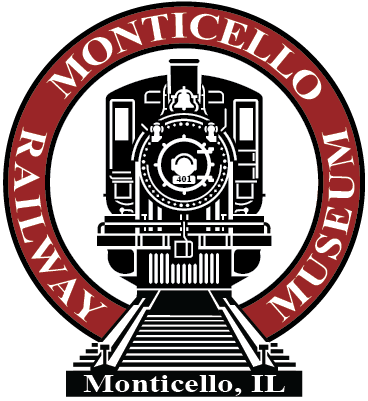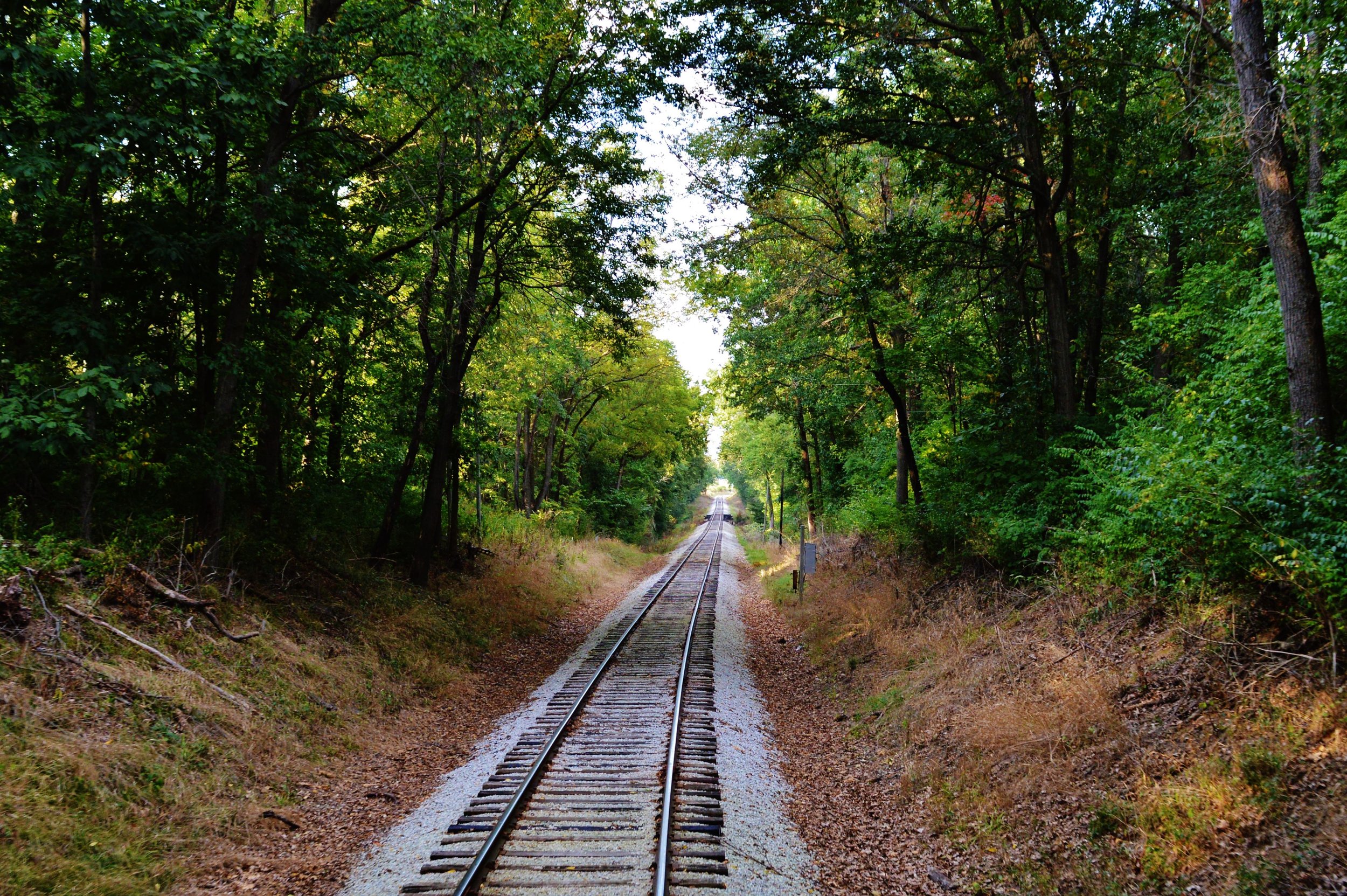
our Railroad
The Monticello Railway Museum offers train rides over several miles of historic rail lines once operated by the Illinois Central and Illinois Terminal Railroads. Each of our two lines have unique histories and allow riders views of beautiful rural Piatt County that can’t be seen from an automobile or airplane. Scroll down to learn more about our route.
THE TERMINAL DIVISION
The Terminal Division of our railroad occupies a section of right-of-way running between the museum’s Camp Creek Yard to the south edge of White Heath, Illinois. Built by the Illinois Traction System (later known as the Illinois Terminal) in the early 1900s, this route was part of the massive Illinois Traction interurban empire that connected St. Louis with the central Illinois cities of Springfield, Decatur, Peoria, Bloomington, Champaign and Danville.
Interurbans were regional passenger and freight railroads whose locomotives and self-propelled passenger railcars typically gained power from electricity traveling through overhead wires (think of a long distance streetcar system). The section of the Illinois Terminal that the museum now occupies was part of the Decatur to Champaign route.
In the 1950s, increasing competition with automobiles led to many interurban railroads around the country losing tremendous amounts of business and ultimately ceasing operations. In 1955, the Illinois Terminal discontinued passenger service on their line through Monticello. Freight trains, which eventually switched to using traditional diesel locomotives instead of electrics, hung on for a few more years before being rerouted over the Illinois Central Railroad, which owned a line that closely paralleled the Illinois Terminal between Monticello and Champaign. The original interurban line was abandoned and the tracks were ripped up for scrap.
In 1970, the then-new Monticello Railway Museum, known as SPUR at that time, purchased five miles of the original right-of-way north of Monticello for use as their museum site and operating railroad. Running from the Camp Creek Yard site to a location just south of White Heath known as Blackers, this stretch of interurban railroad gained new life when volunteers laid new track and began running trains over it in 1971. For the next 16 years, this line would serve as the main route for museum excursion trains.
Following the acquisition of the adjacent Illinois Central line in 1987, the Illinois Terminal became known as the museum’s Terminal Division, while the Illinois Central became known as the Central Division. Today, regular museum trains use a small section of the Terminal Division between the yard and the Nelson Crossing depot, before taking a connection to the Central Division just north of the depot. The rest of the Terminal Division from the connection north to Blackers is currently used for storing railcars.
THE CENTRAL DIVISION
Originally built by the Monticello Railroad Company in the late 1860s and early 1870s, ownership of the museum’s Central Division changed between several different railroads until winding up as a part of the Illinois Central (IC) Railroad. The IC designated the line running from Decatur through Monticello to Champaign as their Decatur District. At Decatur and Champaign, it connected with other Illinois Central lines, and at White Heath (currently the north end of the museum’s trackage), a westward line split off from the Decatur District and went to Clinton and eventually Havana, Illinois, on the Illinois River.
On August 10, 1972, the Illinois Central merged with the Gulf, Mobile & Ohio Railroad to form Illinois Central Gulf (ICG). Soon after the merger, the new ICG management began eliminating less-profitable lines.
An Illinois Central steam locomotive in Monticello circa 1950. This locomotive, a 2-8-0 Consolidation type, is an example of typical locomotives used on branch lines like the Decatur District in the steam era.
The Decatur District managed to survive into the late 1980s, but in 1987, the ICG filed for abandonment of the line. That same year, the Monticello Railway Museum purchased seven and a half miles of the line running from just west of downtown Monticello to downtown White Heath where the line to Havana, also abandoned, split off, with the museum site at roughly the halfway point. A connection was soon constructed, linking the newly acquired Central Division with the museum’s Terminal Division.
The Illinois Central’s depot in downtown Monticello had been demolished in the early 1970s, but on May 29, 1987, the Wabash Railroad’s depot was relocated to a new site along the Central Division in downtown to serve as a station for museum trains. After extensive rehabilitation work was done to the line after it was acquired from the ICG, the Monticello Railway Museum operated its first train into downtown Monticello.
Today, the Central Division is our main line, and most trains we operate traverse it between downtown Monticello and the museum.
An Illinois Traction System interurban car makes a stop at the Monticello depot circa 1910. Located at the corner of Market and Livingston Streets, the depot was demolished in the 1960s and the site is now a parking lot.



